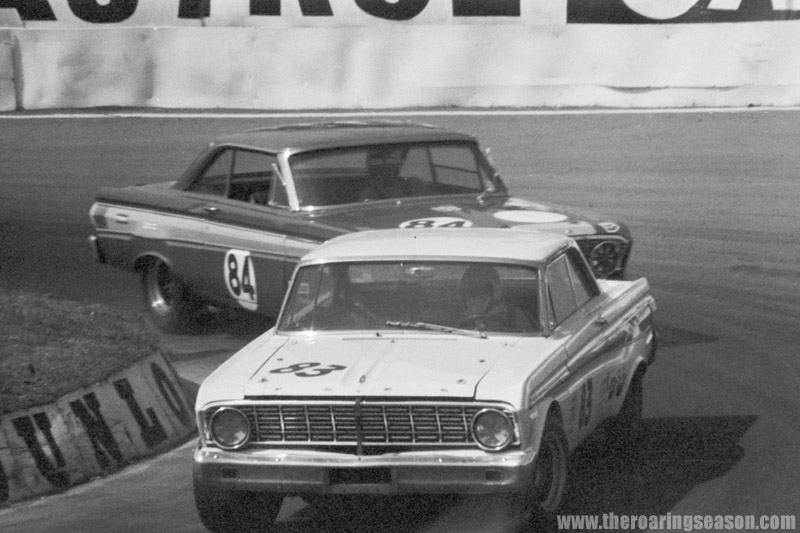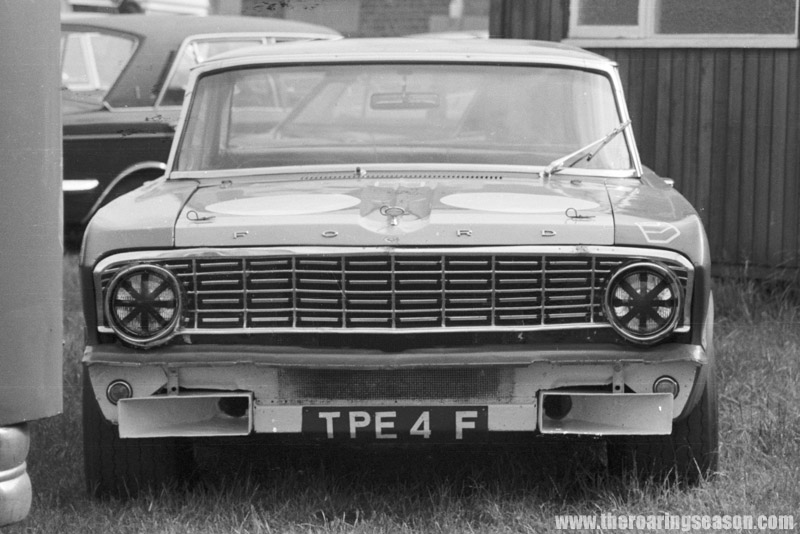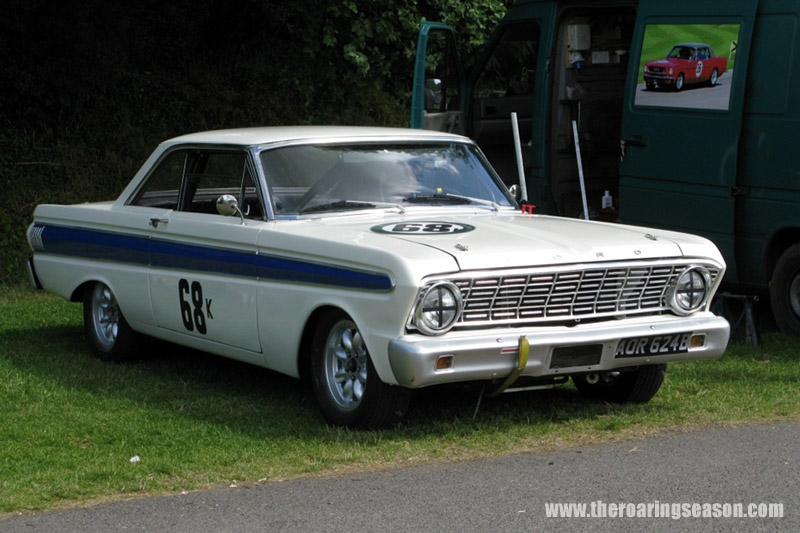-
Administrator


1969 BSCC
For 1969, teams required either factory backing, or to be armed with a Ford Falcon Sprint, to have a genuine shot at outright victory. Alan Mann Racing had the factory backing, everyone else had a Falcon Sprint. For a championship that was supposed to be demonstrating the sporting capabilities of cars similar to what race fans could go and purchase, it seemed bizarre the racing was being completely dominated by a vehicle that had been out of production for four years. But this was the problem with the Group 5 rules.
Four Falcon Sprints were entered for the opening BSCC round for 1969. Muir had switched to the Malcolm Gartlan team, while his spot at Bill Shaw Racing was taken by Pierpoint. Terry Sanger and Martin Birrane were the other two Sprint entries. The opening round at Brands Hatch contained two heats, and both were won by Pierpoint, from Muir and Gardner. Gardner took top spot at Silverstone, followed by Pierpoint and Mike Crabtree in the Willment Racing Escort twin-cam. Muir, from pole position, spun himself out of the race.
On to Snetterton, and Pierpoint was back on top, followed by Sangers Falcon, and backed this with another victory at the high speed Thruxton circuit, followed by another win at Silverstone. Gardner finally took the win at Crystal Palace, the tight confines suiting the little Escort, although Pierpoint retired with mechanical failure. Mallory Park hosted Round 7, which was won by the Escort twin-cam of Rod Mansfield, after Pierpoint, Gardner, and Crabtree had all failed to finish. Dennis Leech had joined the series from Round 4, in yet another Falcon Sprint, and placed second behind Mansfield, and ahead of the Sanger Falcon.
The Croft round was split into two heats, and Pierpoint won both of them. However, it wasn’t behind the wheel of the Falcon. Bill Shaw Racing debuted a newly built 1968 Camaro, running a 350ci small block, and Pierpoint headed home Gardner in both legs, while Leech and Sanger shared the final podium spot. The Pierpoint driven Camaro was first across the stripe again at Silverstone, from Leech, and John Hine in the Duncan Hamilton entered Escort twin-cam.

The Bill Shaw Camaro was destroyed in a heavy shunt at Oulton Park, and Leech took his first BSCC victory, ahead of Gardner and Crabtree. Leech was first home in both heats at the penultimate round at Brands Hatch, taking the Heat 1 win from Crabtree and Willie Green (Escort twin-cam) and the Heat 2 win from Pierpoint, back in the Bill Shaw Falcon, and Crabtree.
Brands also hosted the final round of the 1969 BSCC, and, indeed, this would be the final BSCC race held under Group 5 regulations. It’d also be the last race for the dominant Falcon Sprints. Five Falcon Sprints were entered, for Pierpoint and David Howes in a pair of Bill Shaw entered cars, Leech, Sanger, and Birrane. But Gardner beat them all.
By 1969, Group 5 regulations were in place, not only in Britain, but in various domestic championships right throughout Europe, and the European Touring Car Championship. New Zealand had also adopted Group 5 from the 1968 season. But for 1970, almost everyone would change. For the BSCC, it was a switch to Group 2 once again, although these were a very different set of Group 2 regulations to those used from 1961 to 1965. The 1970 Group 2 rules allowed more freedom, but were not as wild as the outgoing Group 5 rules. And at that, the Falcon Sprints, with their plastic bodywork, were outlawed, after four dominant seasons. Indeed, 1970 had a very different look to it, as Alan Mann had also withdrawn from motor racing.
Some of the lightweight Falcon Sprints of the British Saloon Car Championship made their way into the wild Special Saloon series. Some ended up being destroyed, some had their parts of value removed, and the rest scrapped. And one or two have survived.
Thanks to its impossibly light racing weight gifted to it by the FIA in 1964 for the Monte Carlo Rally, and the approval of fibreglass body panels to try and get down somewhere near that weight, in modern day historic touring car racing held under the popular FIA Appendix J regulations that are used throughout Britain and Europe for cars built prior to 1966, Falcon Sprints are eligible to run to this racing weight, and fit the glass panels. This is also the case in Australian Group Na/Appendix J.

Its unlikely anyone has ever managed to get a Falcon Sprint down to 960kg, but many have tried, and this model is extremely popular in historic racing today as a result. And, indeed, in historic events held throughout Britain and Europe, which mirror touring car racing during the mid-1960s when these cars were new, the Falcon Sprints outnumber the Mustangs and Galaxies, and are invariably at the head of the field.
My thanks to Chris Bennett from Speed Scene www.speedscene.co.uk/ for supplying the Falcon Sprint photos used throughout this article.
Please also visit Frank de Jong’s excellent Touring Car Racing history website, where I got many of the race results from: www.touringcarracing.net/
 Posting Permissions
Posting Permissions
- You may not post new threads
- You may not post replies
- You may not post attachments
- You may not edit your posts
-
Forum Rules






 Reply With Quote
Reply With Quote